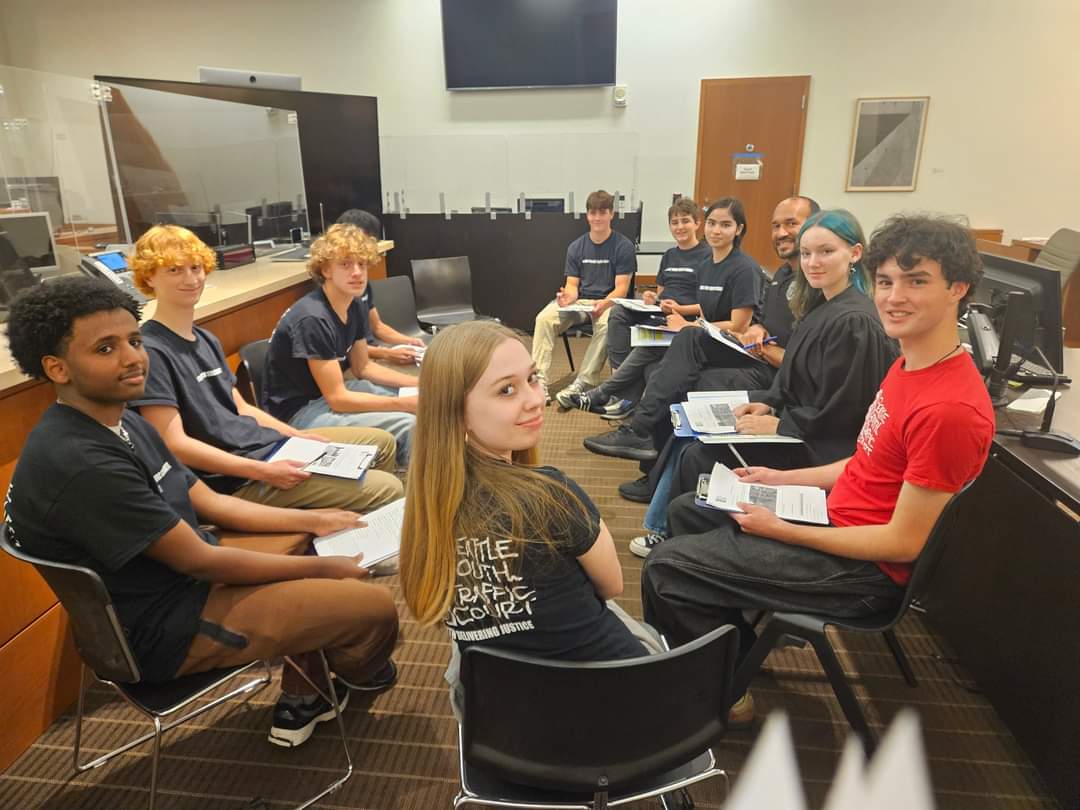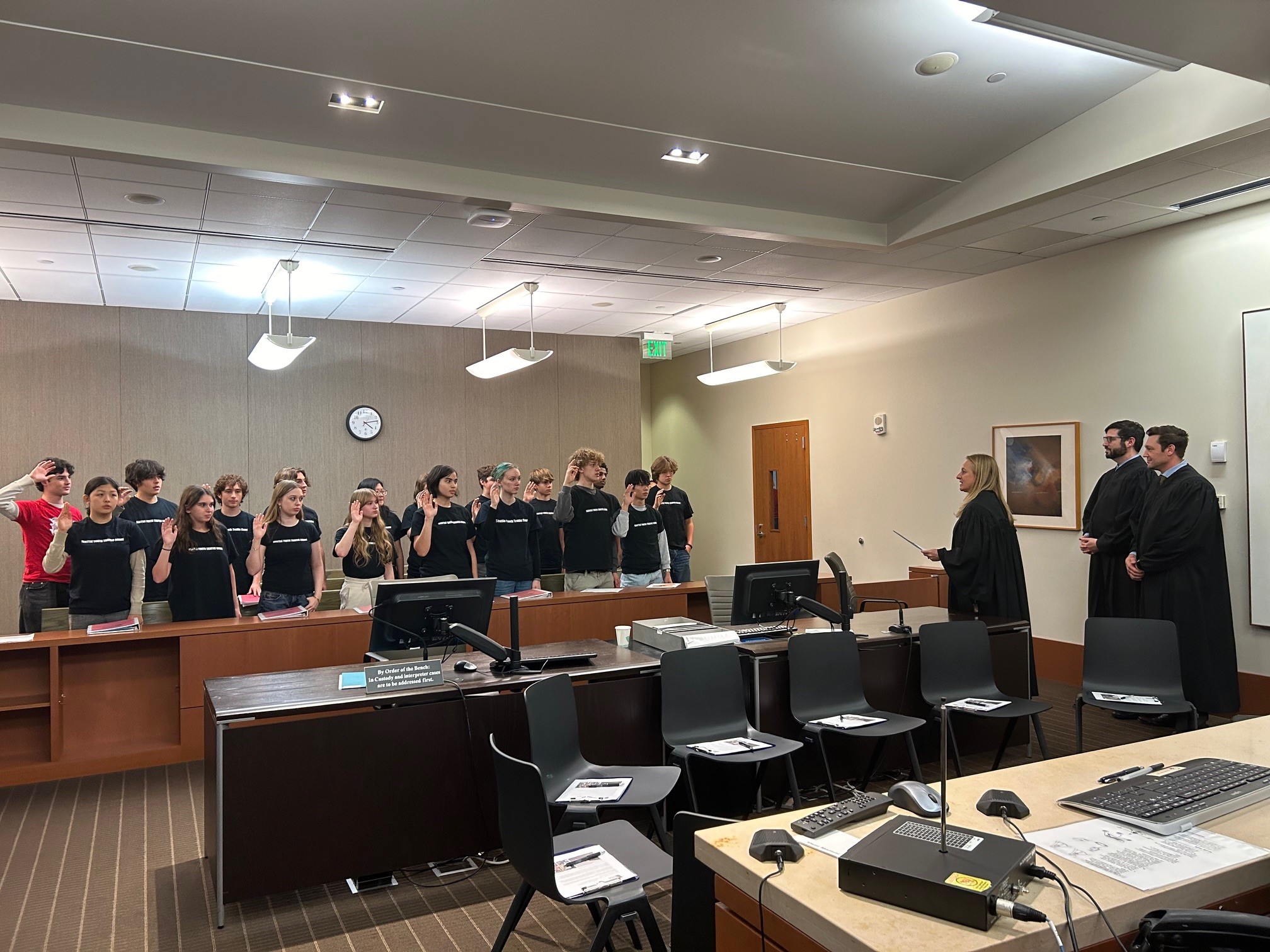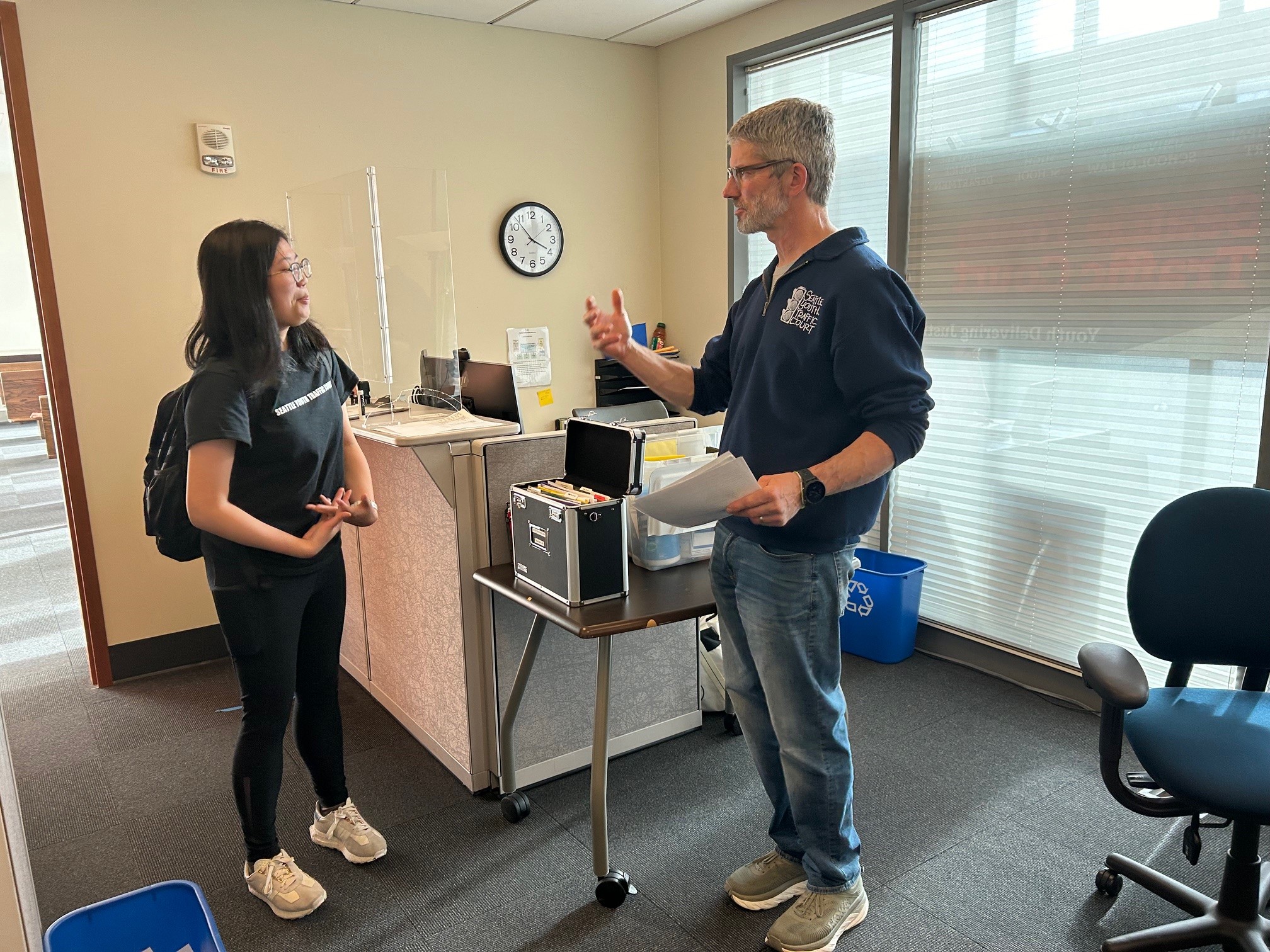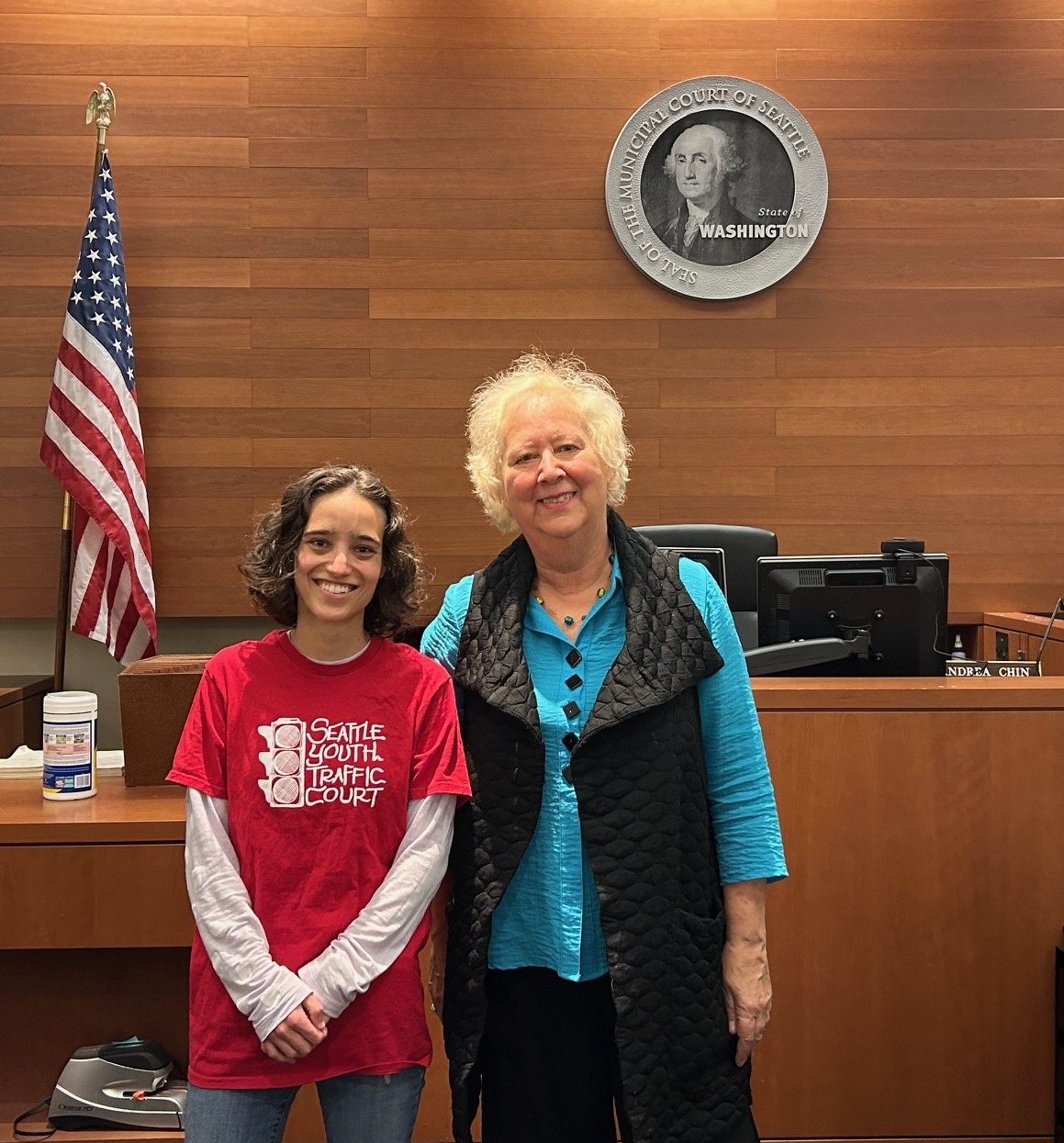A decade plus of Seattle Youth Traffic Court
A Decade Plus of Seattle Youth Traffic Court

In an era with civics education on the decline, one important annual program at Seattle Municipal Court (SMC) is introducing Garfield High School (GHS) students to the judicial process through Seattle Youth Traffic Court (SYTC).
Youth courts take place nationwide and are primarily made up of volunteer middle and high school students with an interest in government. According to The Nation, there are approximately 1,400 teen courts in the U.S. that allow teens to be defended, prosecuted and sentenced by their peers.

Garfield High School students getting sworn into their duties at Seattle Youth Traffic Court.
On Oct. 21, about 25 students from GHS were officially sworn in to begin their (school-) year-long duties at SYTC. By statute, youth courts in courts of limited jurisdiction can handle civil infractions committed by individuals under 18. In fact, SMC has only handled traffic infractions in SYTC, but the cases have changed over time. During the pandemic, when police gave fewer speeding tickets, 85% of SYTC cases involved collisions, committed by youth who didn’t stop at a stop sign or light, followed too closely, or failed to yield to right of way. That said, all four cases on the docket earlier this week involved speeding—some as much as 30-35 miles per hour above the limit.
SMC has participated in SYTC with students from Garfield High School and Seattle University School of Law since 2012. Its co-directors are Margaret Fisher, a law professor at Seattle University (SU) School of Law, SMC Judge Catherine McDowall, and SMC magistrates Seth Niesen and Noah Weil. SMC employee Simi Gill, who works in court operations, is also highly involved, as are law students at SU, who serve as mentors, and Al Snyder, a teacher at GHS who serves as SYTC’s youth advisor.

Garfield High School teacher and SYTC advisor Al Snyder preps a student for the day’s cases.
“Our role is to attend trainings with law students and high school students and to provide our input on the justice system,” said McDowall of herself and the magistrates. “We also provide the facilities and help with funding, in addition to setting the screening standards for the civil infractions that will be referred to youth court.”
SMC is fortunate to have someone like Margaret Fisher to be involved. She was hired by the American Bar Association in 2000 to write the national youth court training curriculum and even traveled the country to observe other youth courts in action. Thrilled by what she saw, Fisher approached her dean, recruited law school students for support, and engaged SMC and GHS to establish a youth court. SMC’s first youth court hearings took place in March 2012. Seattle’s youth court currently has the capacity to hear six cases per month, September-June.
Over the years, Fisher says she has had a lot of memorable moments, but it’s “observing participants gain insight into how their actions affect others and taking steps to improve their driving and make up for the harms they caused,” that really stands out.
“I particularly enjoy observing high school volunteers mature and become skillful court participants, working with dedicated, intelligent law students who are thoughtful and motivated,” Fisher said. “I also appreciate that the partnerships of police, judicial officers, law students, and high school students along with a restorative justice approach really helps young people who have committed their first traffic infraction.”
SPD Detective Curtis Oh and Officer Tre Smith play a number of roles in youth court. They attend the hearings and participate in the restorative justice circle. Their role is to testify to consequences they have experienced with similar drivers. This helps with the restorative justice goal of getting defendants to understand the consequences that did or could have happened based on their driving. In addition, the officers provide driving advice to help participants improve their driving and avoid problems that resulted from their infraction.

Erika Mondo, a first-year law student at Seattle University School of Law, with SU law professor Margaret Fisher, who runs the SYTC program.
Erika Monda, a first-year law student and a mentor this program year, was one of the first participants in youth court—having been involved from 2012-2015. “Youth court was a big part of my life in high school and influenced my decision to major in criminal justice for my undergraduate degree and now has me in law school,” she said. “My involvement in youth court instilled in me not only an interest in the law and legal system, but also provided a sense of responsibility to my community. As a high schooler in youth court, I really felt like I was making a difference.”
In a few months, look for another post featuring high school students and others talking about their experiences with SYTC. To learn more about the program, visit https://www.seattle.gov/courts/programs-and-services/specialized-courts/seattle-youth-traffic-court.



Comments
Post a Comment